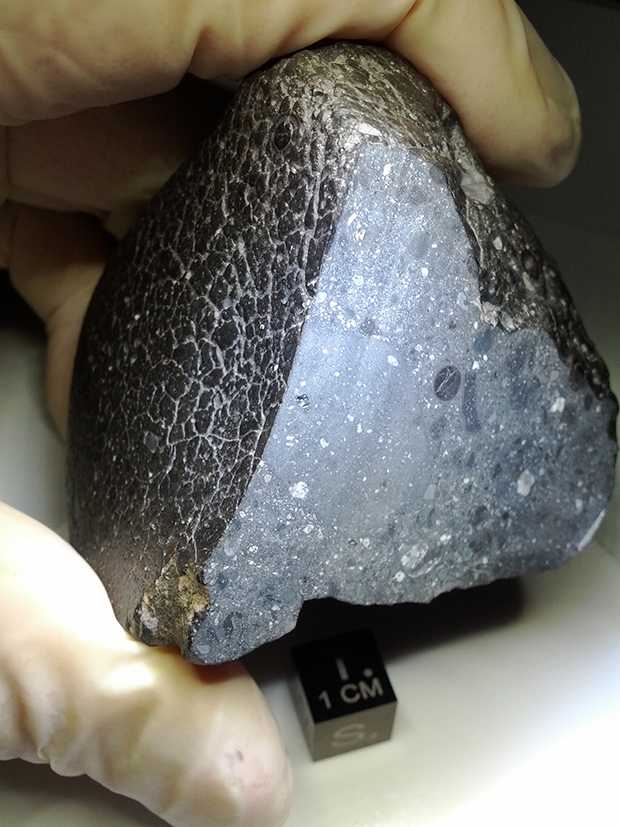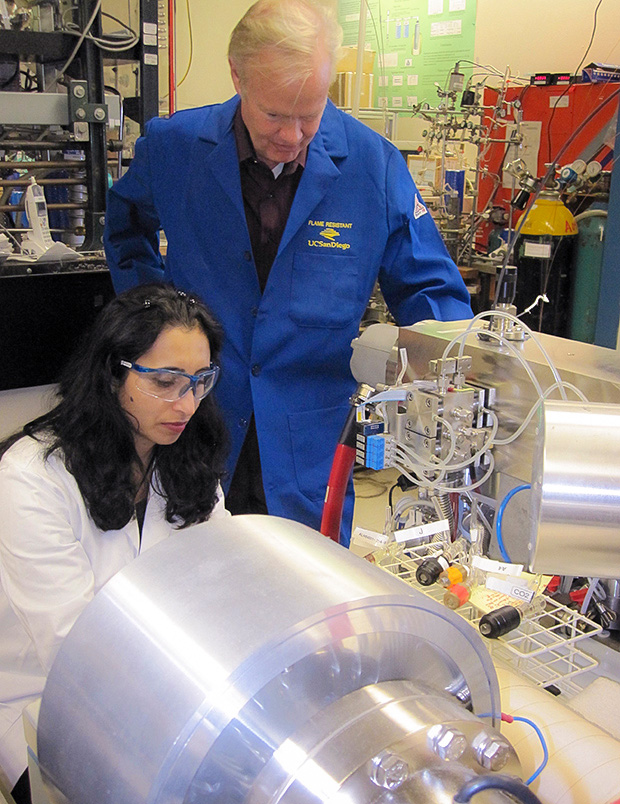
By:
- Kim McDonald
Published Date
By:
- Kim McDonald
Share This:
Urey Hall Chemists Reveal History of Two Mysterious Space Rocks

The unusual Mars meteorite is the first linked to the Martian crust. Credit: Carl Agee, U of New Mexico
Two unusual space rocks that survived their fiery falls through Earth’s atmosphere have ended up in the Urey Hall chemistry laboratory of Mark Thiemens, whose group identified one as a new class of Martian meteorite that likely originated from the Red Planet’s crust.
“This meteorite is extremely interesting because it suggests that what we knew about the composition of Mars and how it came to be needs a major adjustment,” said Thiemens, dean of the Division of Physical Sciences and a professor of chemistry and biochemistry.
The 2.1-billion-year-old rock, which was presumably blasted off Mars into space when an asteroid hit the planet, landed in Northwest Africa and is one of 110 known meteorites from Mars. Thiemens and UC San Diego chemists Morgan Nunn and Robina Shaheen were part of a team of scientists from the University of New Mexico and the Carnegie Institution of Washington that analyzed the meteorite and discovered its unusual properties.
The team reported this month in the journal Science that the meteorite has ten times more water than any other Martian meteorite and a chemical composition that suggests it was formed from rapidly cooled lava—a common characteristic of many types of lunar and terrestrial rock samples, but not of any other known Martian meteorites. The scientists said its unusual composition of cemented fragments of basalt dominated with feldspar and pyroxene suggests it came from the Martian crust.

Robina Shaheen (left) and Mark Thiemens analyze meteorite samples in their mass spectrometer. Credit: Kim McDonald, UC San Diego
In another paper published two weeks earlier in Science, Thiemens and Nunn detailed their analysis of another space rock—one that was observed streaking across the Northern California sky last April and recovered near Sutter’s Mill, the site of the 1849 California Gold Rush.
Not only was the fireball photographed and videotaped, but fragments of the falling meteorite were tracked by Doppler weather radar, allowing them to be rapidly retrieved. This allowed Thiemens, Nunn and a team of 70 international scientists to study for the first time a primitive meteorite with little exposure to the elements, providing the most pristine look yet at the surface of a primitive asteroid.
The meteorite is thought to have originated from a 100,000-pound asteroid that broke apart as it entered the atmosphere above the Sierra Nevada mountain range last April 22 at a speed of 64,000 miles per hour. Less than two pounds of that original asteroid were recovered on the ground in the form of 77 meteorites, one of which was analyzed by Thiemens and Nunn, who determined that the Sutter’s Mill space rock was a rare “CM-type carbonaceous chondrite” meteorite.
Share This:
You May Also Like
Stay in the Know
Keep up with all the latest from UC San Diego. Subscribe to the newsletter today.


